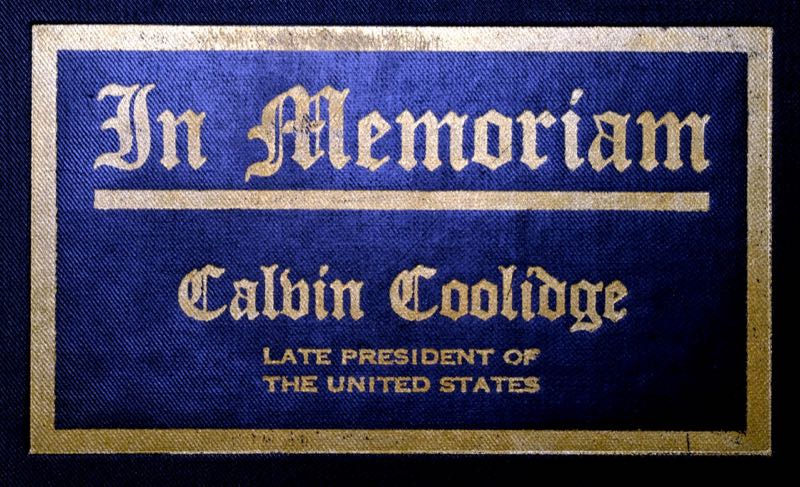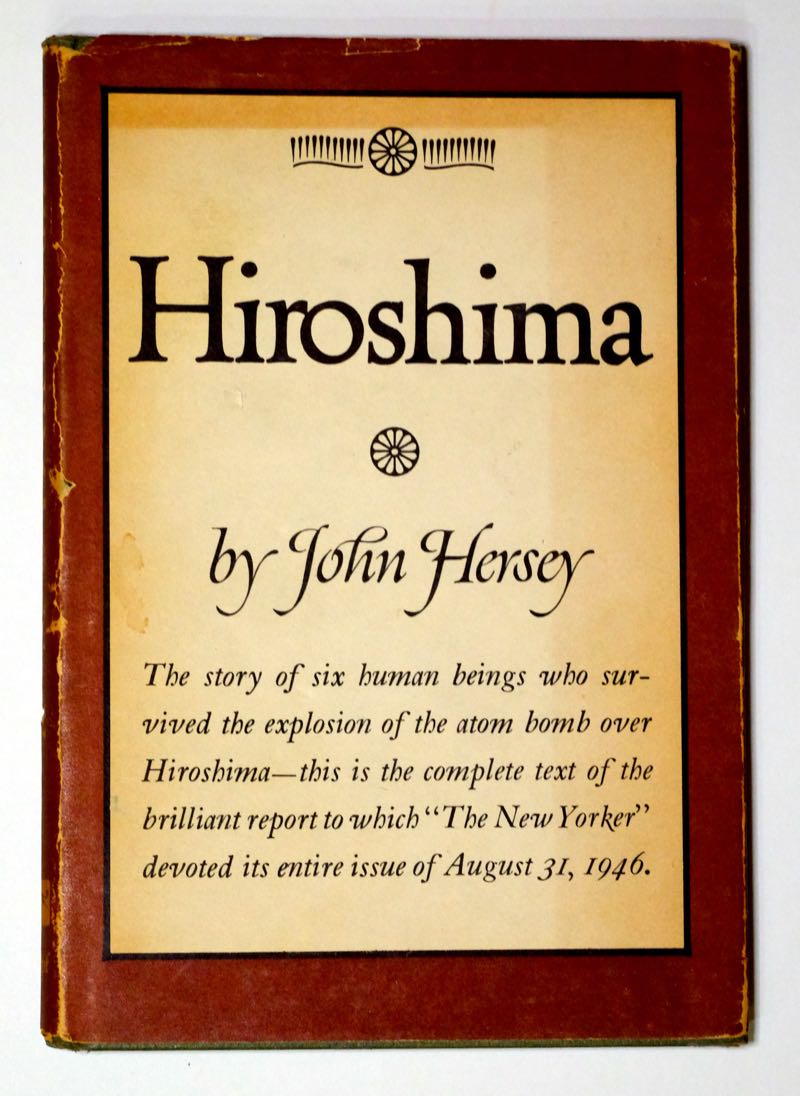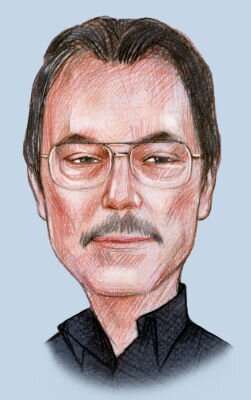
It’s not to everyone’s taste, but a substantial group of humans who are free to roam the earth like to collect stuff. Some focus their collections — stamps, coins — but others of us are not prejudiced. We collect anything that is interesting.
“It might be worth something someday,” one such person, an uneducated fellow in his early 20s I knew in upstate New York 40 years ago, was fond of saying.
Such persons carry a huge amount of baggage. We do not get along at all well — might be a different species from — those who eschew clutter. Our motto might be, “Sure, I’ll take it.” To those whose proclivities are the opposite, we might as well be from Mars.
We were fed well in the early days of eBay, when the site was filled with people who had an interesting thing to sell and those looking for something interesting to buy. (It has not been like this in recent years. Now, hundreds of identical overseas vendors seek to sell their vast quantities of new, cheaply made junk. Useful sometimes, but eBay is not what it was in its days of glory.)

The hard-core among us also check out the thrift shops, not all of which are the same. The best ones are in affluent areas where the people are educated and have gained their affluence by doing interesting things, preferably where the money has been in the families for generations. (For instance, the Calvin Coolidge memorial book came from an area populated with former members of Congress whose books were probably donated upon their deaths.) Also, the best thrift shops haven’t been set upon by a professional thrift-shop marketer, who overprices everything. A thrift store is not an antique shop.
This all came to mind the other day when I happened upon at the back of the cupboard something amazing that you don’t have one of and probably never will see one of.
It is a classified coffee mug.
You read that correctly.
The mug is in promotion of some submarine or submarine-related thing. It says “U.S. Navy Boeing Update IV,” and seems to have been given to some or many officers in naval procurement in hope that they could be convinced by a coffee mug that Update III just wouldn’t do any longer. It has that once-remarkable glaze that changes color when you fill it with something hot, at which point in this case submarines and the words “We hear you” appear. I do not think that Boeing was trying to sell a submarine that is invisible except in hot water — who knows? A search of the words on the mug produces nothing. Maybe everything about it was classified.
Which the whole mug most assuredly is, or more likely was — I’ve had the thing for 30 years. Don’t believe me? On the bottom is a sticker that reads: “Classified Information. This media will be kept in a secure area. This sticker will not be removed.” Beyond the fact that the Department of Sticker Acquisition in the Department of Defense is illiterate — “media” is plural — its classified status seems not to have been taken very seriously. If found by those who do not wish our nation well, could it have led to the development of weapons designed to make the seas boil so they could see and shoot our now-visible submarines? (Of course, it could be that despite the novelty mugs the Navy decided that Update IV was not for them.)
Why do I have it? It’s not as if I’m on Boeing’s secret-coffee-cup list. No, I got it from a friend who was moving. Why did he have it? He’s not on the Boeing classified-crockery list, either. He got in in a box of military-promotion mugs for, I think a dollar, at a thrift shop in the Washington, D.C. area. (I have the others as well. Even an early stealth fighter mug, where the airplane similarly appears and disappears. But it is not classified. I expect to charge admission to look at them and thus survive in my dotage.)
I have it because, as I mentioned, my friend was moving and, as I also mentioned, people who acquire a lot of interesting stuff have a lot of interesting stuff, which is no problem until they move whereupon it becomes an enormous problem. He and his wife moved. I inherited many interesting things through invoking the solemn motto also mentioned above, “Sure, I’ll take it.”
(The biggest of these items is a United Press International teletype machine. It would be cool, restored. It is not restored.)
I’ve found plenty of stuff on my own. Some of it is things an actual grownup could own without embarrassment, such as the gorgeously printed congressional memorial book published upon the death of Calvin Coolidge, and copies of other significant books.
There is, for instance, the first-edition “Hiroshima,” John Hersey’s account of the first use of an atomic bomb in warfare. The story was the entire August 31, 1946 edition of The New Yorker. It was published a few weeks later as a book. It is historically significant as a book, and the story is, well, I do not have the adjectives for it.
It cost me a quarter. I found it among the dog-eared copied of “Jaws” and various potboilers of summers past at the Greenwich, Connecticut, hospital thrift shop.
Likewise an original edition of “Thirty Seconds Over Tokyo,” the gritty account of Jimmy Doolittle’s “Tokyo Raiders” and their impudent 1942 attack on Tokyo, which didn’t win the war but did let Japan know it was vulnerable. (It was made into a movie, but Capt. Ted Lawson’s account — he was among the raiders — is better.) It, too, was two bits.

So taking the time to look through the books is worthwhile, always. As with Forrest Gump’s chocolates, you never know what you’ll find.
Which is true of thrift shops in general. Visiting one is more like archaeology than shopping. When you go shopping, the idea is that you need or want something, so you go to the store and buy it. When you go to the thrift store, you are looking for nothing in particular, just what you might find. Sometimes it is a book that one is proud to own, and sometimes it is something you would have thought was really cool when you were a kid. It is cheap and you go ahead and get it.
Which is how I came to own a World War I doughboy helmet. And a much later tank drivers helmet, complete with microphone. (My absurd Soviet officers dress hat was found by the friend who bestowed the teletype machine on me. He ended up with the great old Hallicrafters tube-type shortwave radio, which passed back and forth between us a few times. I don’t remember which of us bought it — I think it was me.)
The 1963 Kodak Instamatic 400, purchased for $3, was attractive to me because the price of it when new, with its built-in selenium light meter and wind-up motor drive, was the same as a new Nikon F. Which is absurd.
It’s tempting to think about things like collector value, and it does cross one’s mind, but if one goes looking for items for resale then the whole spirit of the thing is lost. It turns into one of those boring British television shows. The proper thrift store denizen is looking for cool stuff to become part of the museum he fancies he already has. He is a curator of curios and interesting things. Yeah, that’s it. (I depart from the strict path in that when I get a book, I read it. Do you have any questions about Calvin Coolidge?)
It does over time result in odd arrangements. Modern décor is not really welcoming of the big blue practice bomb that I got for $10 at the not-really thrift shop, United House Wrecking. It contributes to the fact that my three-bedroom house has only one room used as an actual bedroom. I sometimes think I’m somewhere between the tragic shows about people who hoard things and, say, “American Pickers.”
One of these days I’ll unload about half of it all.
But which half? As I look around, my eyes move from item to item, any of which after all might be worth something someday . . .

Dennis E. Powell is crackpot-at-large at Open for Business. Powell was a reporter in New York and elsewhere before moving to Ohio, where he has (mostly) recovered. You can reach him at dep@drippingwithirony.com.
You need to be logged in if you wish to comment on this article. Sign in or sign up here.
Start the Conversation